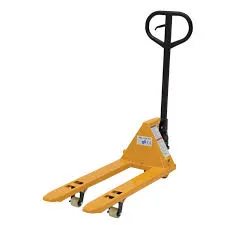


Understanding Fall Protection Types Ensuring Safety in the Workplace
In various industries, especially construction, maintenance, and manufacturing, the risk of falls is a significant concern. Falls from heights can lead to serious injuries or even fatalities. Hence, the implementation of effective fall protection systems is crucial. This article examines the different types of fall protection systems available, each designed to mitigate the risks associated with working at elevated levels.
1. Guardrails
Guardrails are one of the most common types of fall protection systems. These barriers are installed around the edges of elevated surfaces, such as roofs, scaffolding, or platforms, to prevent workers from falling. Typically made from metal or wood, guardrails are designed to withstand significant force and are often accompanied by toe boards to prevent tools and materials from falling off the edge. Guardrails are an effective solution when a permanent protection system is feasible.
2. Personal Fall Arrest Systems (PFAS)
Personal Fall Arrest Systems are essential for workers who need to move freely while working at height. A PFAS typically includes a harness worn by the worker, a lanyard, and an anchor point. When a fall occurs, the harness connects to the lanyard and slows the descent to minimize the impact. PFAS systems are highly effective but require proper training for effective use. Workers must ensure their harnesses fit correctly and that the system is inspected regularly.
3. Safety Nets

Safety nets are another proactive approach to fall protection. They are deployed below the work area to catch falling workers or materials. These nets are particularly beneficial in construction environments where workers may be operating at significant heights and where it is impractical to use guardrails or PFAS. Safety nets must meet specific performance criteria and be installed and maintained correctly to be effective.
4. Controlled Access Zones (CAZ)
A Controlled Access Zone creates a designated area where access is limited to authorized personnel. This method is useful in situations where traditional fall protection systems may not be feasible, such as during certain construction operations. CAZs are marked by ropes, signs, or other barriers, and the specific area needs to be monitored to ensure compliance. This system relies heavily on the skills and awareness of the workers involved.
5. Warning Lines
Warning lines serve as a visual alert for workers about the potential danger of falling. Typically used in conjunction with other forms of fall protection, warning lines are placed around the edge of a roof or elevated work surface to indicate where the fall risk begins. While they do not provide physical barriers, they are an important tool for raising awareness and encouraging workers to remain alert in hazardous areas.
Conclusion
In conclusion, the variety of fall protection types available ensures that employers can tailor safety measures to meet specific needs and conditions of their work environments. The choice between guardrails, personal fall arrest systems, safety nets, controlled access zones, and warning lines will depend on factors such as the nature of the work, the height involved, and regulatory requirements. Ultimately, the overarching goal of any fall protection system is the safety and well-being of workers. By prioritizing effective fall protection measures and ensuring that all employees are trained on their proper usage, organizations can significantly reduce the risk of falls and create a safer workplace environment.



